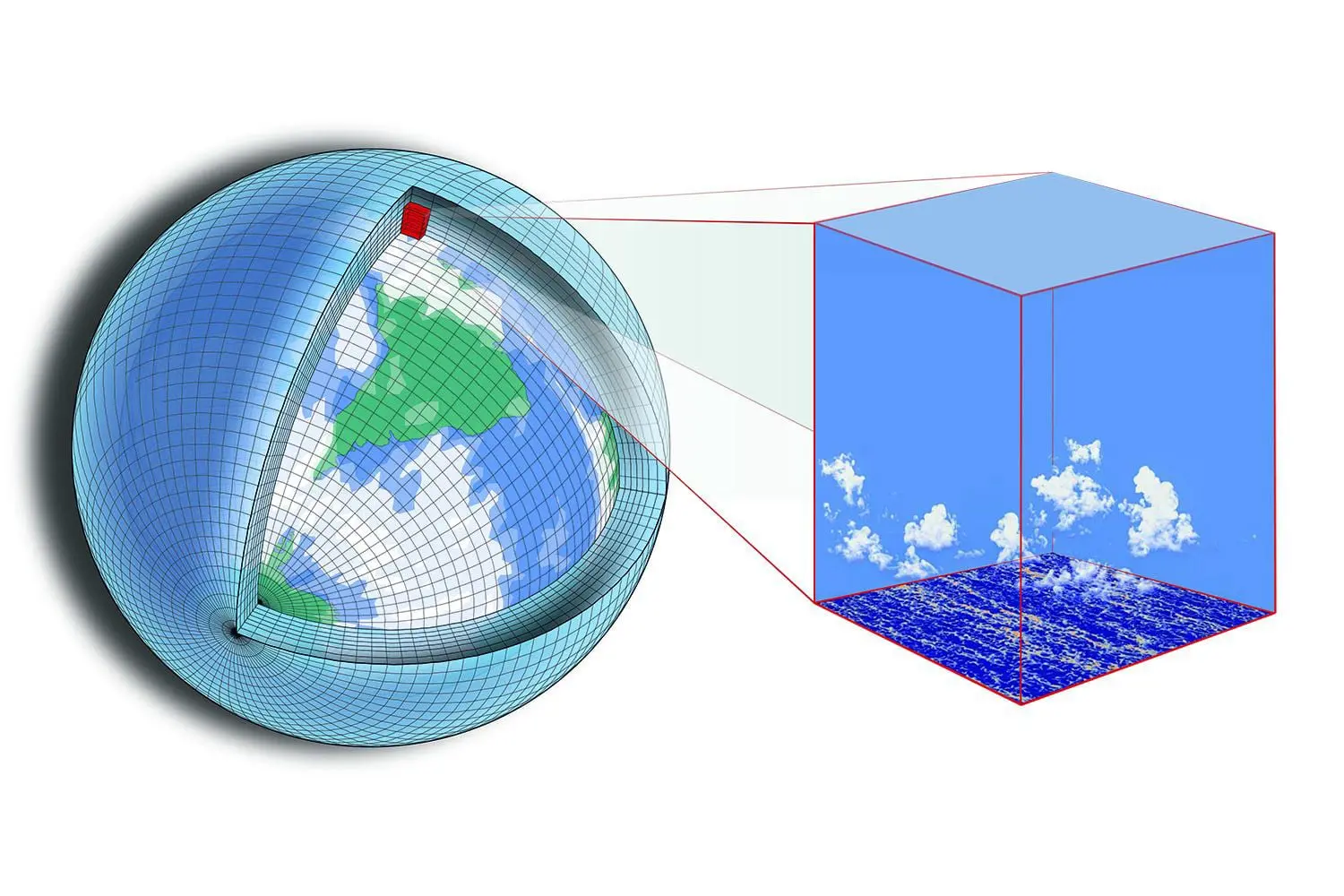Exponential Computational Advantage in Climate Simulations & Weather Forecasting
Climate change is one of the greatest global challenges facing humankind in the 21st century. Doubtlessly the study of climate change and its consequences is of immense importance for our future. Global climate models are the best means we have of anticipating likely changes.
In general terms, a climate model can be defined as a mathematical representation of the atmosphere, oceans, and geology of Earth, based on physical, biological, and chemical principles. The equations derived from these principles are solved numerically over grids that span the entire globe or portions of it, using discrete steps in space and time. The time step could be between several minutes and several years, depending on the process being studied, on available computer capacity, and
on the choice of numerical method.
The central difficulties that face climate researchers are stability and scalability; that is, to find stable solutions with respect to small changes in the initial conditions and to increase the resolution of the current models. Even for the models
of today with the highest resolution (so called meso-scale models), the numerical grid is too coarse to represent small scale processes such as turbulence in the atmospheric and oceanic boundary layers, interaction with small scale topography features, thunderstorms, cloud microphysics processes, etc. Scientists rely on finely tuned approximations that must walk a thin line between physical accuracy and computational feasibility.
The equations used to build climate models are, of course, partial differential equations (PDEs). The equations are non-linear and are coupled together into systems and their solutions are truly nontrivial. In fact, the existence, uniqueness, and stability of the most general case has yet to be proven. If one can side-step these difficulties by means of approximation and simplification, one may still find that solutions behave chaotically, i.e. small variations in initial conditions give rise
to divergent predictions.
*** Automatski' ODE/PDE Solvers can do industrial scale Climate Simulations and Weather Forecasts "Today". Often in near realtime which is the best part.

